Laigh Milton Viaduct
Gatehead, Kilmarnock
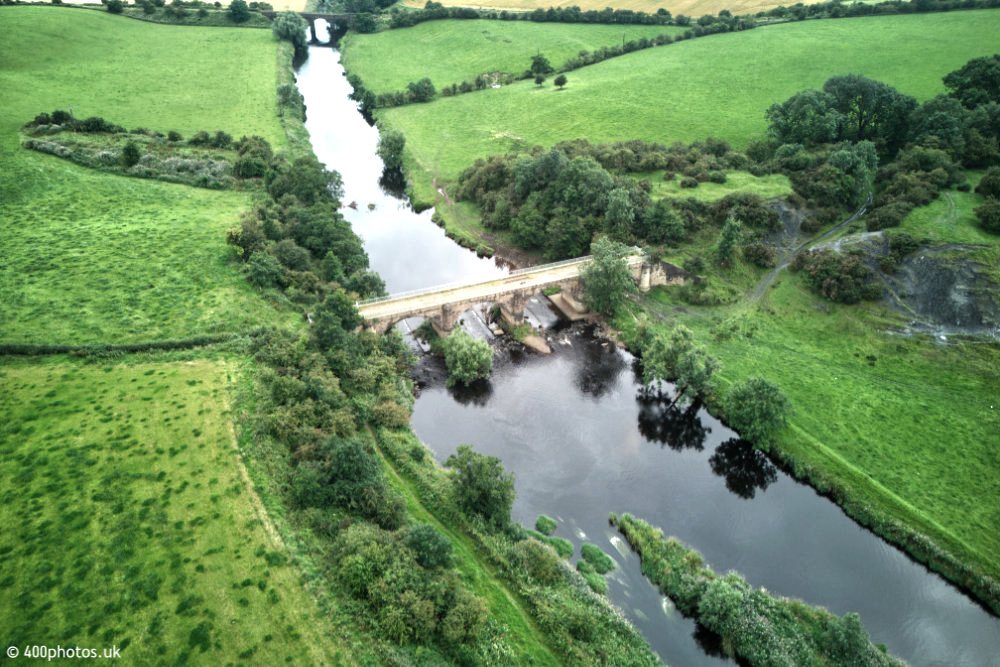
This is the original viaduct on the ten mile trackway built in 1811 by the 4th Duke of Portland
to carry coal from his mines near Kilmarnock to the port of Troon.
It takes the track across the River Irvine and the current line and bridge can be seen upstream in these photos.
It takes the track across the River Irvine and the current line and bridge can be seen upstream in these photos.
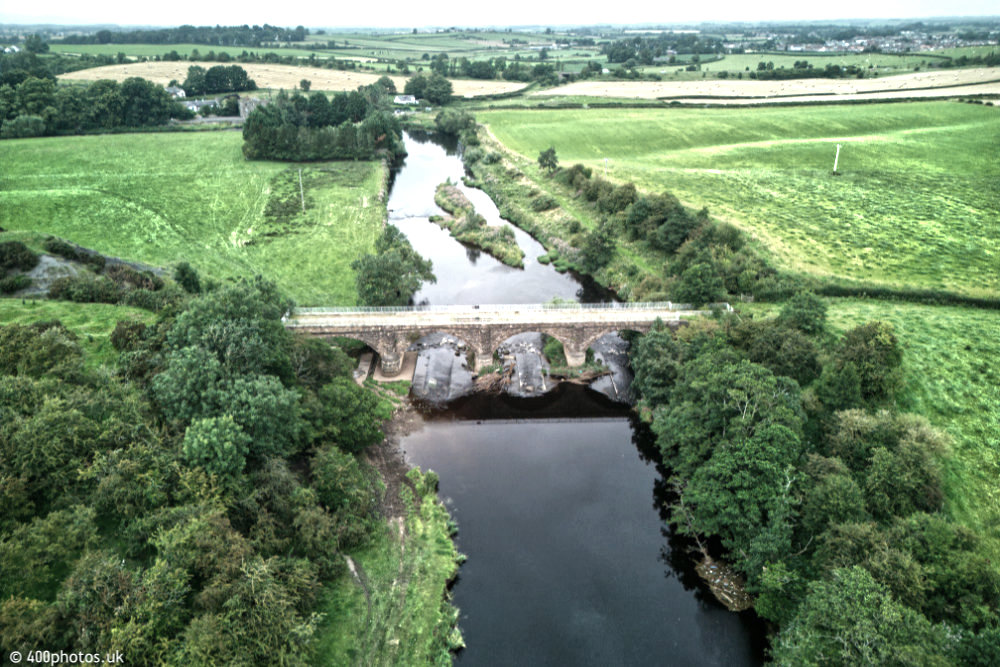
Officially titled “The Kilmarnock and Troon Railway”. This viaduct is the oldest surviving
example on a public railway and is often described as the first railway viaduct in the world.
It was in effect a horse-drawn railway (a dry canal?) and was built before reliable steam locomotives were invented.
Although Richard Trevithick had built steam engines before his 1804 locomotive Robert Stevenson's “Rocket“ wasn't built until 1829, about eighteen years later.
It was in effect a horse-drawn railway (a dry canal?) and was built before reliable steam locomotives were invented.
Although Richard Trevithick had built steam engines before his 1804 locomotive Robert Stevenson's “Rocket“ wasn't built until 1829, about eighteen years later.
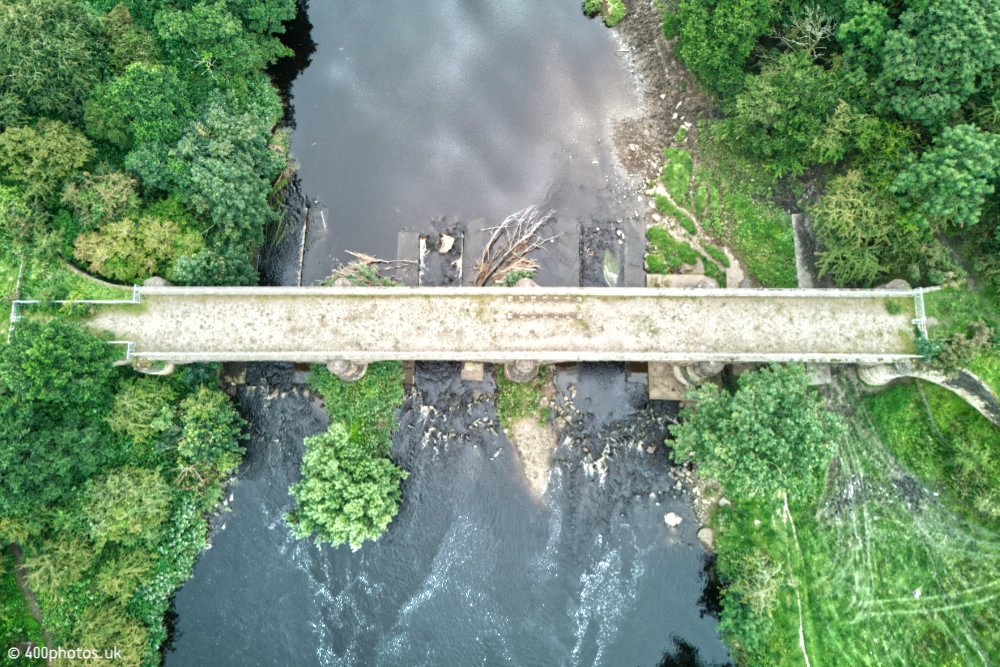
The wagons carrying coal ran between vertical plates rather than on rails, a system
that was easier and cheaper to build than conventional railway lines and just as effective.
Part of the plateway has been left as a sample.
A steam locomotive was used on this line in about 1816 but it didn't last for long.
Part of the plateway has been left as a sample.
A steam locomotive was used on this line in about 1816 but it didn't last for long.
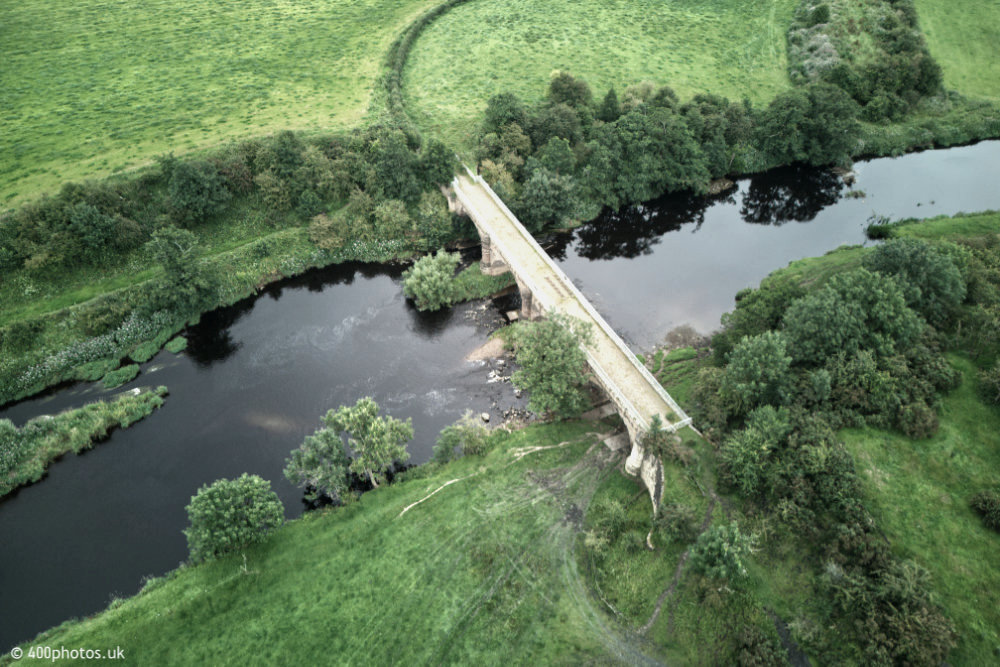
The bridge is open to walkers and pedestrians and there's a (rough) path from the old
and now derelict Laigh Milton Mill, with parking spaces.
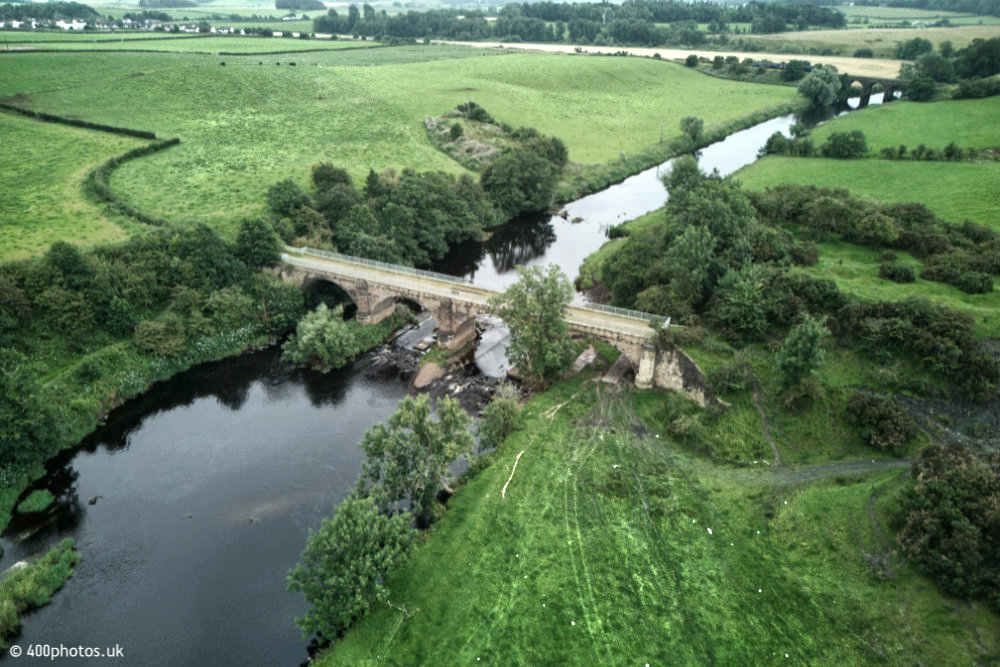
Looking upstream from the north-east.

